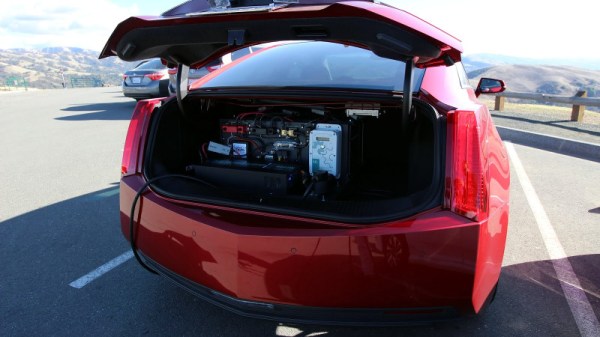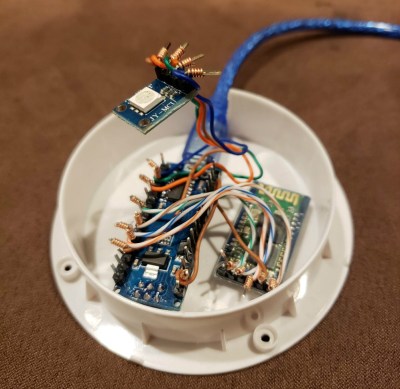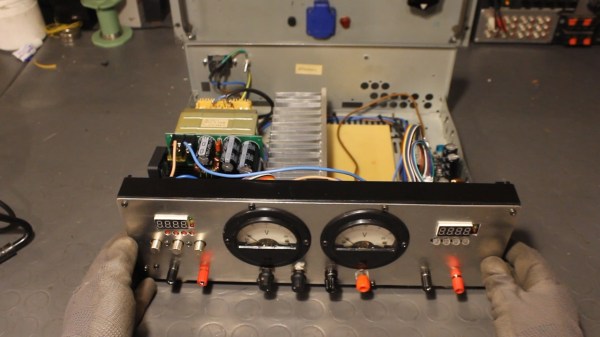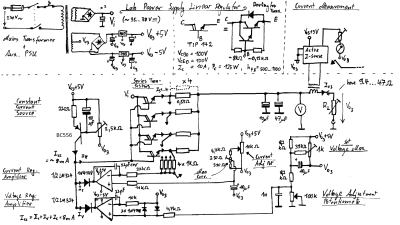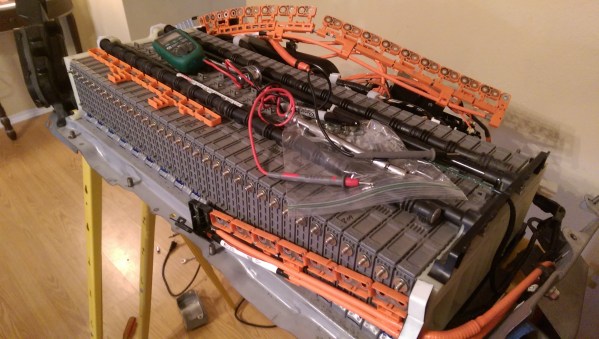[Andrew Rossignol] has a slightly unusual plug-in hybrid vehicle, a Cadillac ELR, and his latest project for the car sees him building a battery-powered portable mains charging pack for it in an attempt to increase its range. If this seems to be a rather cumbersome exercise, his write-up details the work he put in trying to hook up directly to the car’s internal battery, and how a 4 kW mains inverter and an off-the-shelf mains charging station were the most practical alternative.
His first impulse was to hook a second supply to the car’s high voltage bus from a supplementary battery pack and inverter, but in this aim he was thwarted by a protection diode and his not wanting to modify the car to bypass it. So the unlikely solution was to take his battery pack from a second-hand Toyota Prius upgrade kit and build it into a frame along with the inverter and charger. The result is something akin to a portable generator without the small gasoline engine, and while it is hardly the most efficient way to transfer energy from a wall socket into a car it does offer the ELR a significant range upgrade.
The cost involved has probably kept away many readers who would like to hack their hybrid cars, so we’ve seen surprisingly few. This home made Geo Metro supplements its forklift motor with a small gasoline generator. Meanwhile [Andrew] is no stranger to these pages, among the several times his work has appeared here are his rundown on OBD sniffing the ELR, and from a while back, displaying graphics on an oscilloscope including a Wrencher.

